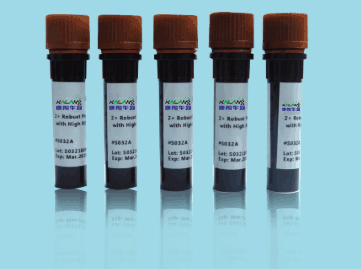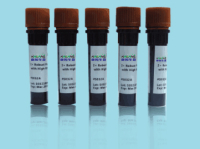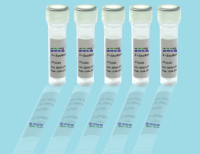

客服电话:021-61998208


Pan Methylated Lysine mouse Monoclonal Antibody(Mix)
Pan Methylated Lysine mouse Monoclonal Antibody(Mix)
应用:WB: 1:1000-2000 IHC: 1:200-500
产品名(Product Name)
Pan Methylated Lysine mouse Monoclonal Antibody(Mix)
货号(Catalog No.)
KL-15077
种类(Category)
Primary antibodies
宿主(Host)
Mouse
反应种属(Species specificity)
Species independent
应用实验(Tested applications)
WB,IHC-p
克隆性(Clonality)
Monoclonal
偶连物(Conjugation)
Unconjugated
免疫原(Immunogen)
Conjugated Protein
状态(Form)
Liquid
储存溶液(Buffer)
PBS, pH 7.4, containing 0.5%BSA, 0.02% sodium azide as Preservative and 50% Glycerol.
存放条件(Storage)
-20°C/1 year
纯化方式(Purity)
The antibody was affinity-purified from mouse ascites by affinity-chromatography using epitope-specific immunogen.
产品背景:Methylation of lysine residues is a common regulatory posttranslational modification (PTM) that results in the mono-, di-, or tri-methylation of lysine at ε-amine groups by protein lysine methyltransferases (PKMTs). Two PKMT groups are recognized based on structure and catalytic mechanism: class I methyltransferases or seven β strand enzymes, and SET domain-containing class V methyltransferases. Both use the methyl donor S-adenosyl-L-methionine to methylate histone and non-histone proteins. Class I methyltransferases methylate amino acids, DNA, and RNA. Six methyl-lysine-interacting protein families are distinguished based on binding domains: mBT, PHD finger, Tudor, PWWP, WD40 repeat, and chromodomains. Many of these display differential binding preferences based on lysine methylation state. KDM1 subfamily lysine demethylases catalyze demethylation of mono- and di-methyl lysines, while 2-oxoglutarate-dependent JmjC (KDM2-7) subfamily enzymes also modify tri-methyl lysine residues.
特别提示:本公司的所有产品仅可用于科研实验,严禁用于临床医疗及其他非科研用途!








